Bologna is the capital and largest city of Emilia-Romagna located in Northern Italy, at 85 kilometers from the Adriatic coast.
Founded BC, the city of Bologna, a significant stage of development which occurred in the Middle ages, holds a rich history and a restored historical center, the draft of which was completed before the end of the 19th century, when Bologna was one of the few remaining large walled cities in Europe.
Modern Bologna is a special atmosphere and flavor, a city that is constantly full of life, a place where together the intertwined history and modernity. Where slowly walking around the narrow ancient streets with an abundance of historical sites, imagine that is a developed industrial, financial and transport hub and one of the richest cities in Italy.
In 2000, the city was declared European capital of culture, and in 2006 was included in the list of creative cities Network of UNESCO.
The patron Saint of the city is St. Petronius. Holy day and feast is celebrated on 4 October.
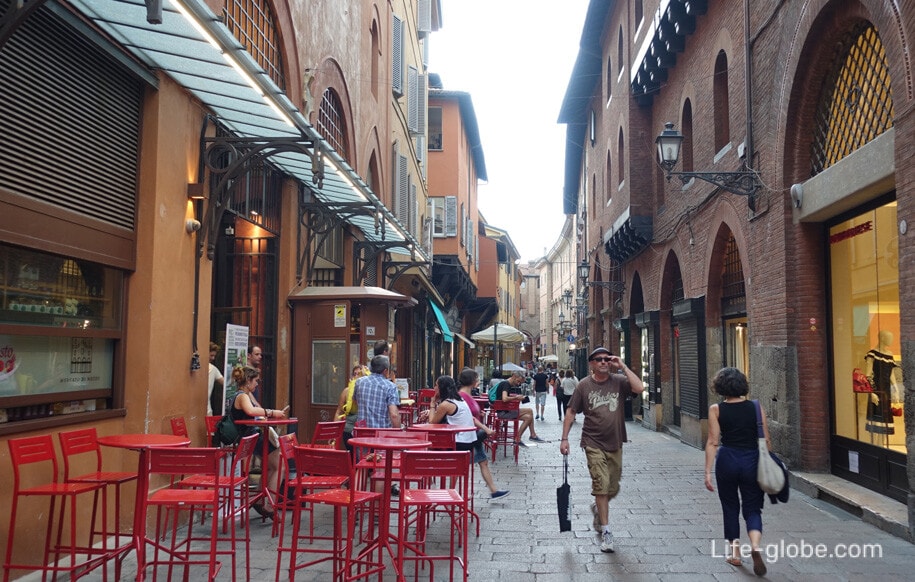
Near the center of the city is the international airport of Bologna Guglielmo Marconi (Aeroporto Guglielmo Marconi di Bologna).
The airplanes landing at the airport of Bologna, meets car "Follow me" ("Follow me"), one of which is the Lamborghini Huracan, provided the headquarters of Lamborghini in Sant'agata Bolognese, located 25 km from Bologna airport.
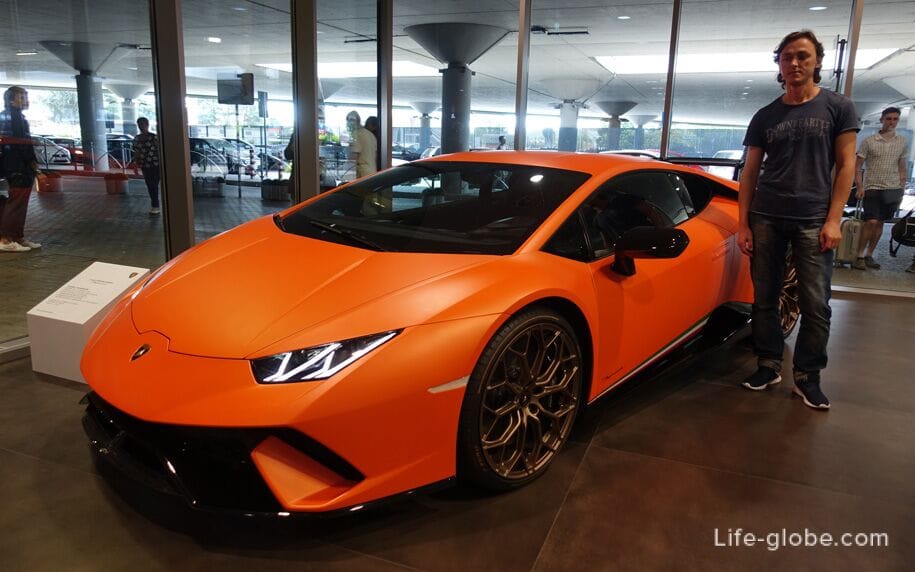
In Sant'agata Bolognese Museum is a car brand Lamborghini, which presents a legendary model from its origins to the present day. You can also make a sightseeing tour of the Assembly line Lamborghini Aventador V12 (website).
If the car brand Lamborghini will not cause you any emotion, but you are not indifferent to the Ferrari brand, you can visit the museums of Ferrari, located near Bologna:
- Maranello museo Ferrari, located in Maranello, which also has headquarters and manufacturing company Ferrari, the headquarters of Formula 1 team "Scuderia Ferrari" (the website);
- Enzo Ferrari Museum situated in Modena.
The pizzeria, located at the airport of Bologna, you can taste quite delicious and affordable pizza from the oven. Cheap flights to Bologna....
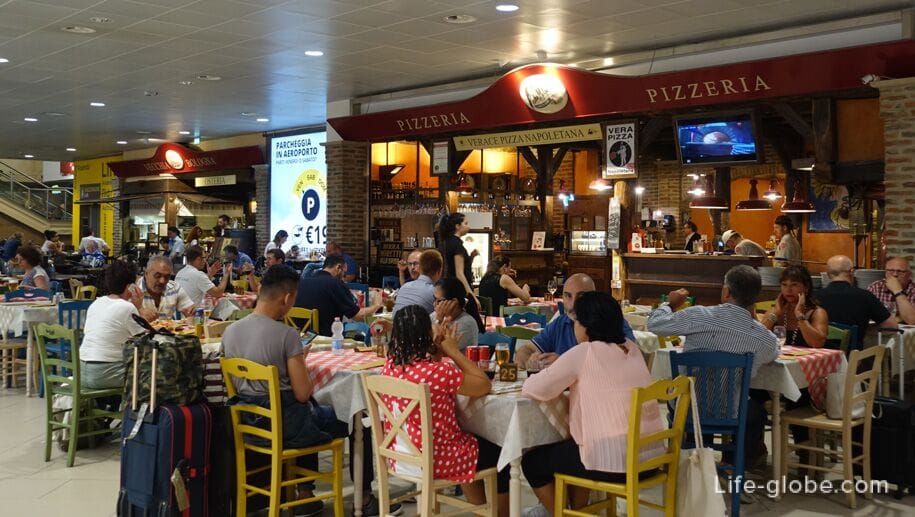
Bologna is considered the capital of the University (a University town), it is called "Academic". Because the city is the oldest University in the world, founded in 1088 - University of Bologna (Universita di Bologna).
Today the University has 11 schools, 33 faculty and 93 libraries distributed throughout the city, also includes four subsidiary campuses in nearby cities: Cesena, forlì, Ravenna and Rimini.
In one of the former buildings of the University now houses the Anatomical theatre (Teatro Anatomico), which once served as a showroom for medical students.
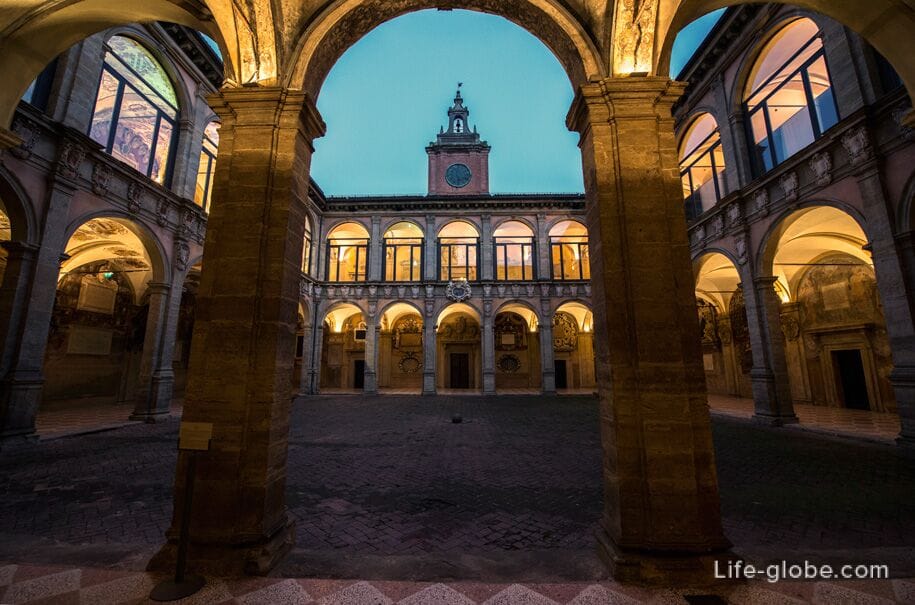
The historic centre of Bologna
In the middle ages the city was surrounded by a defensive wall with 12 gates, most of which have survived to this day.
These gates are currently framed in the historic centre of Bologna, which is the heart of the city, where flows the main tourist life is concentrated most of the attractions, but is also an abundance of shops, cafes, restaurants and hotels, museums and theaters, markets and a shopping centre.
Bologna's historic centre is quite compact, it is easy to get around on foot, and attractions are located close to each other.
The streets are mostly narrow, along which there are as bright and enlivening all around, and simply monumental and sometimes quite inconspicuous historic building.


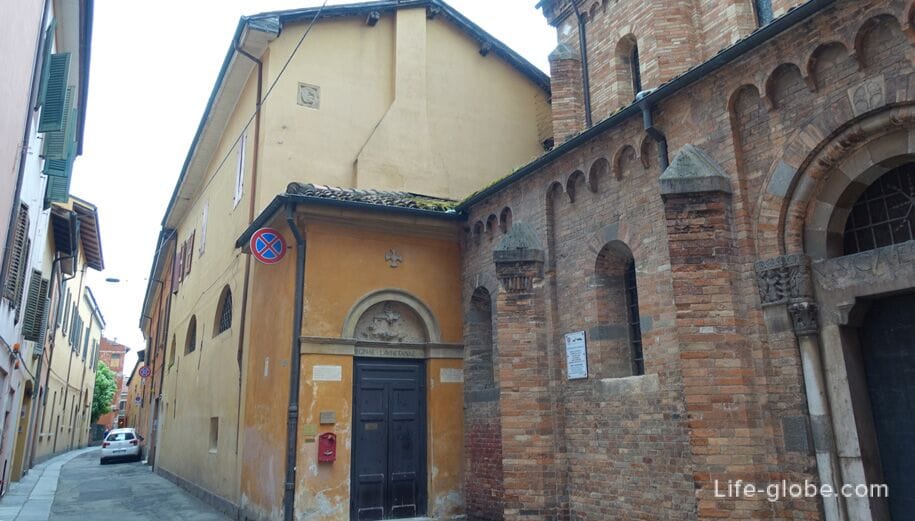
Along many of the streets are drawn porticoes and arcades that serve as excellent protection from direct sunlight in hot summer days and shelter in rainy weather. In total, the historical centre of Bologna, there are about 38 kilometers of porticos and more than 45 kilometers in the city.
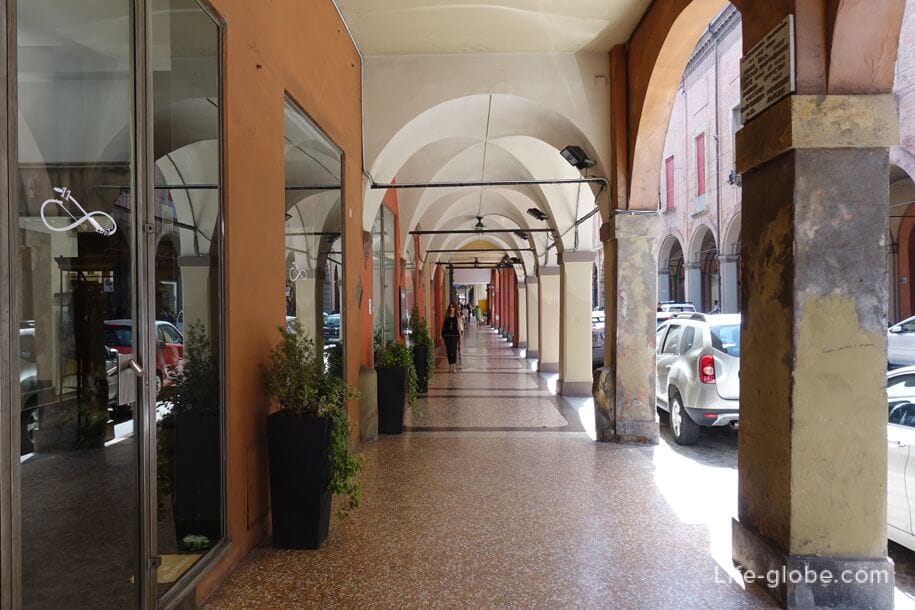
The main attractions of Bologna
First of all, Bologna is famous for its numerous churches and palaces, towers and porticos, and a channel through which one of the parts of the city popularly known as "Little Venice".
Channels Of Bologna
In the middle ages, thanks to the wide system of channels, which, at present, almost all destroyed (buried), the town was one of the main commercial centers of Northern Italy.
Today you can see the Moline canal is not the most famous attraction, but without a doubt, one of the interesting. The channel is known as the attraction of Finestrella (Finestrella Canale delle Moline), which is a narrow channel, almost hidden from view, because both sides are buildings, standing right next to each other. The balconies of the buildings hang directly over the waters of the channel. There is also a cafe overlooking the canal.
To see the channel from the streets Piella, Malcontenti, Alessandrini.
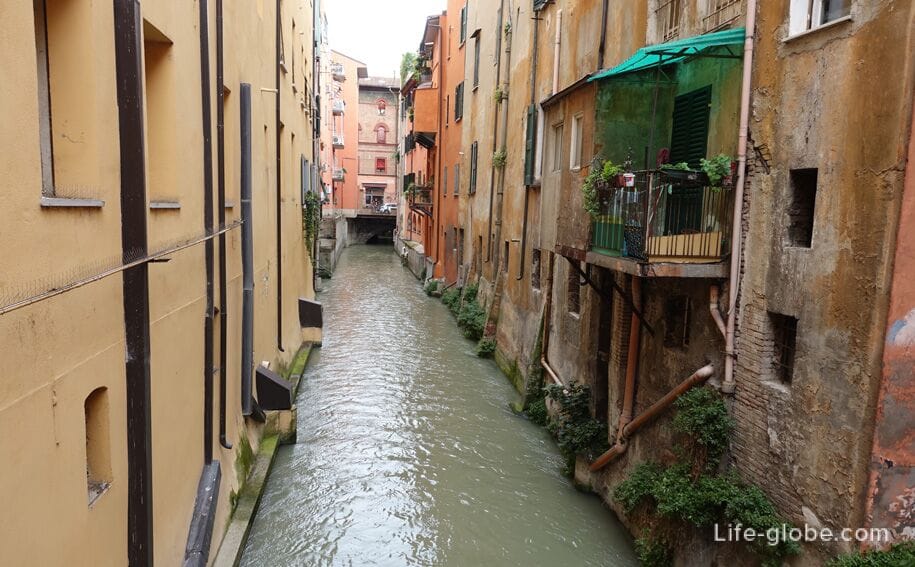
The Towers Of Bologna
At the end of the 12th century, at least, a hundred towers, crossed the skyline of the city, only twenty of which have survived the ravages of fire, warfare and lightning strikes, and can still be seen.
Previously, the tower served not only defensive and warning of the danger function, but also served as a symbol of the viability of the family - was considered, the higher the tower, the richer the family.
Now the most visited towers of Bologna are the Two towers of Bologna, also known as the towers of Bologna Asinelli and Garisenda (Le due Torri Asinelli, Garisenda).
High tower tower of the Asinelli, known today as the highest of all the "Falling towers" of Italy. The tower is accessed via internal wooden staircase. The tower offers panoramic views of the historical centre of Bologna.
The Garisenda tower is a smaller tower or a small tower, but more falling - has a greater slope.
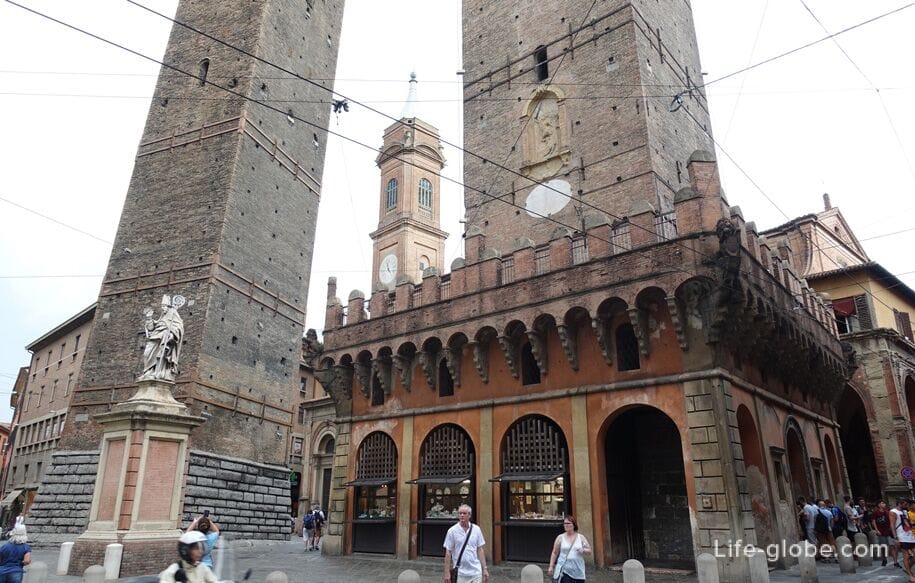
The main square of Bologna
The heart of the historical center of Bologna is the Piazza Maggiore is the biggest square of the city, the history of which originates from the 13th century, when the municipality started to purchase the house and adjacent land for the construction of the square, which would become an important element and gathered all kinds of urban activities (manufacturing and various services) at the same time.
The perimeter of Piazza Maggiore decorate the main administrative and religious buildings of Bologna:
- Basilica of San Petronio (Basilica di San Petronio) - Cathedral of Bologna, dedicated to the patron Saint of the city, the Bishop of Bologna in the fifth century, St. Petronius. In the Basilica you can climb to the panoramic terrace, to visit the chapel of the Magi and the Museum of Saint-Petronius;
Palazzo del Podesta - first place city government, built in 1200 years, now representing a long building with a large hall on the top floor with a double open arcade on the ground floor, along which are shops and cafes;
- the Palazzo dei Banchi - a former banking center, a Palace designed in the Renaissance style, rising in the second half of the 16th century where there are now shops and cafés, offices and private apartments, and behind the Central structure of the Palace are: the municipal archaeological Museum, the Church of Santa Maria della Vita and Mezzo market (Mercato di Mezzo);
- Palazzo d'accursio or Comunale / Palace of the Commune (Palazzo d Accursio / Palazzo Comunale), former city hall, now the art Museum.
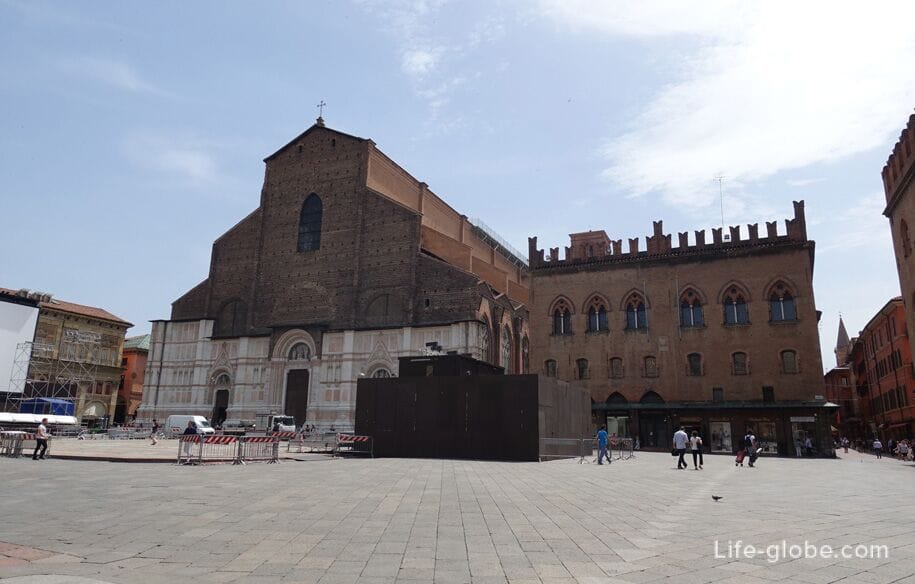
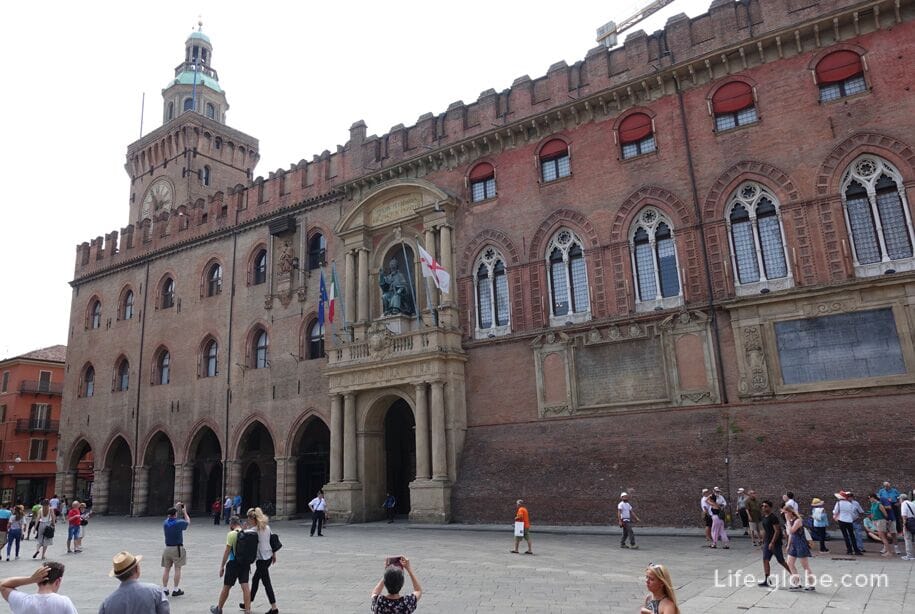

To the North-West side of the Piazza Maggiore is adjacent to another attractive area, founded in 1565 - Neptune square (Piazza del Nettuno), which is decorated with the famous monumental fountain of Neptune (Fontana del Nettuno) on two of the sides are important historical buildings: the library of Salaborsa and Palazzo Re Enzo.
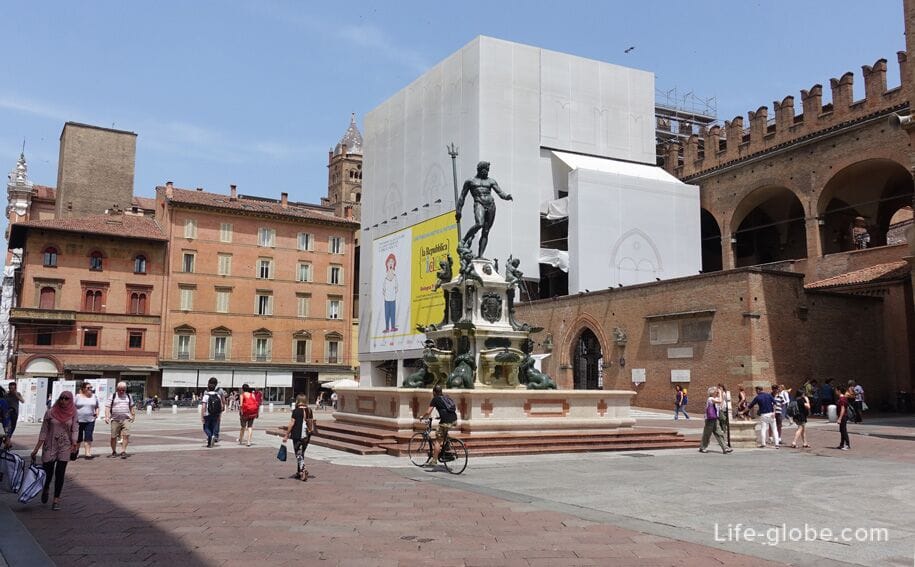
The square of August 8 (Piazza VIII Agosto), originating from Roman times, in 1219, became the property of the municipality of Bologna acquired the name of Piazza del Mercato as the space reserved for cattle market since 1251.
During the Napoleonic period the square was renamed Piazza d Armi. 8 Aug 1848, when the Bolognese defeated Austrian troops, the square was given its present name.
Today the area is home to the historic market "La Piazzola", which every Friday and Saturday quickens as the square and the adjacent Park Montagnola (Parco della Montagnola).
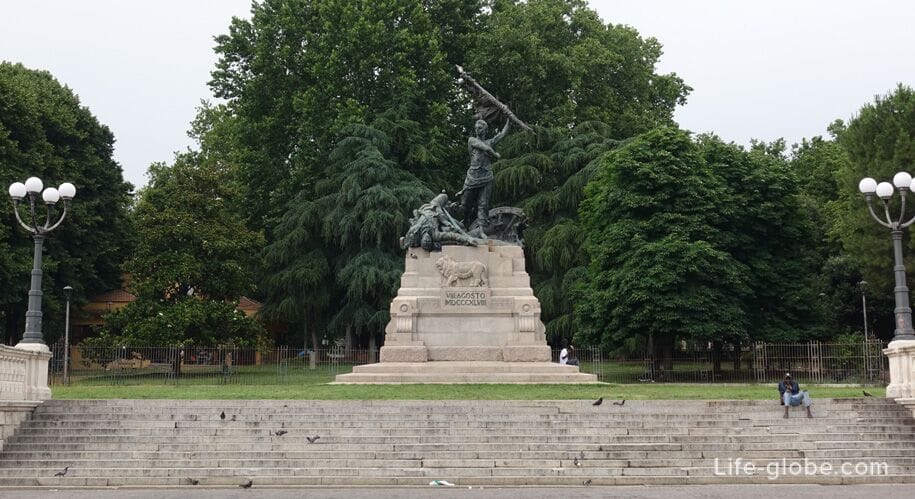
Isolani House (Casa Isolani)
One of the rare examples of houses of the 13th century. The house is characterized by a portico supported by large oak beams (9 meters), which relies on the third floor.

The main Church of Bologna
The Cathedral Basilica of Saint Peter or San Pietro (Cattedrale di San Pietro). Much of the current Church building dates back to the 17th century, and some parts - by the end of the 16th.
Among the most famous works of art of the Cathedral it is possible to allocate some of the preserved frescoes, the Crucifix of cedar wood, and a sculpture group depicting "the Lamentation over the Dead Christ".
Also noteworthy: the Cathedral's bell tower which you can climb and the Cathedral Museum, which displays religious items, utensils, furniture and liturgical vestments, Dating from the fifteenth to the twentieth centuries.
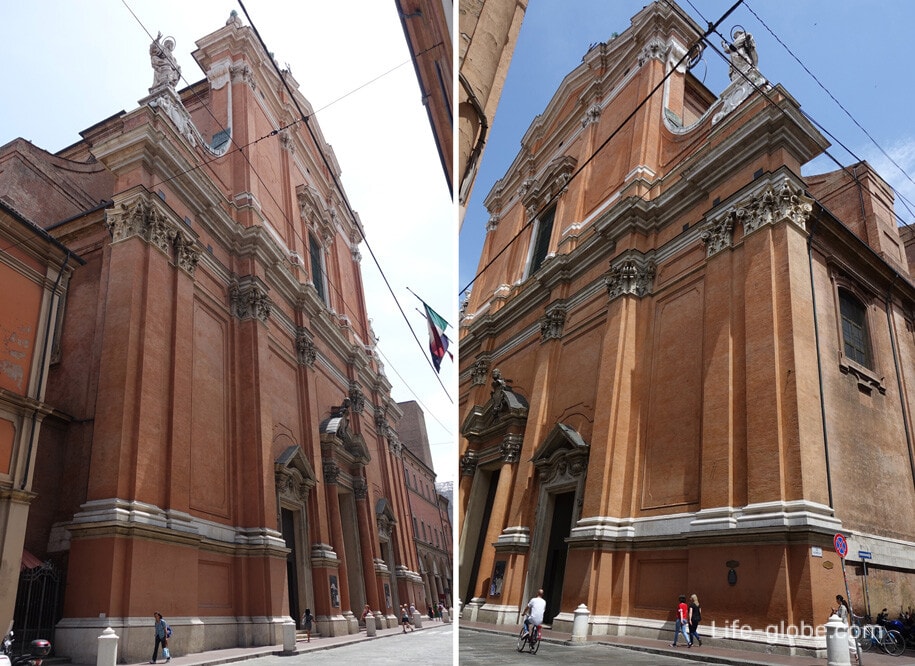
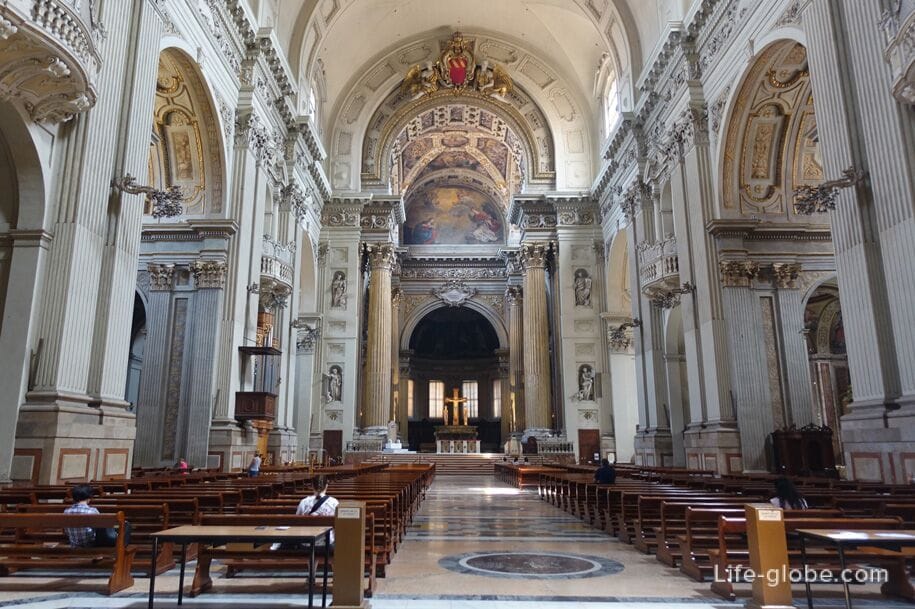
The Church of San Bartolomeo (Chiesa Santi Bartolomeo e Gaetano), originally owned by the order of St. Benedict, after a group of nuns in the 13th century, in 1516, was demolished to replace it with a large building.
At the end of the 16th century the Church was transferred to Tatincom, after which the original building was added a new tower and the dome.
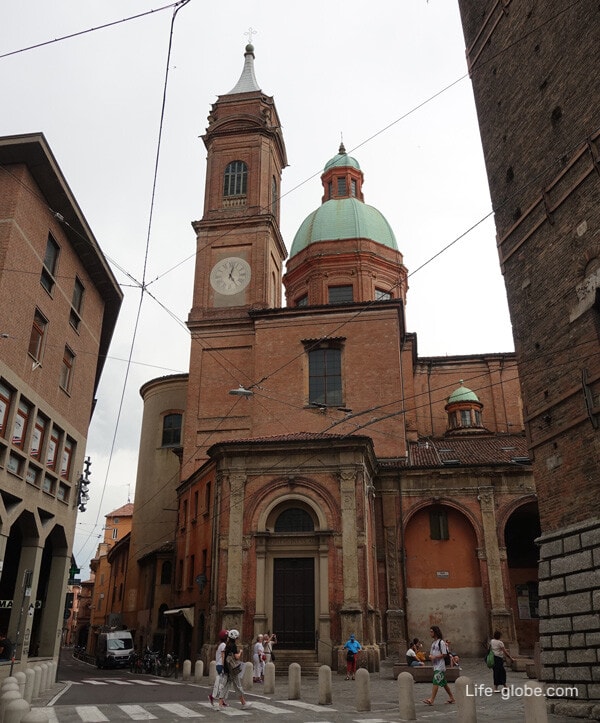
The complex of St. Stephen or the complex of Santo Stefano (Complesso di Santo Stefano Basilica di Santo Stefano) is a complex of religious Christian buildings, perhaps the most unusual and voluminous in Bologna.
The origin of the complex is very ancient and is still being discussed. Basilica of St. John the Baptist, called "the Crucifixion", dates back to the 8th century; the Church of the Holy Sepulchre belongs to the fifth century; the Basilica of Saints Vitale and Agricola originated in the 4th century.
Now the complex is a consolidated stylistic uniformity, which makes it the most interesting Romanesque monuments in the city. The complex includes: Basilica, a medieval monastery, the courtyards, the chapel, crypt and Museum of Santo Stefano.
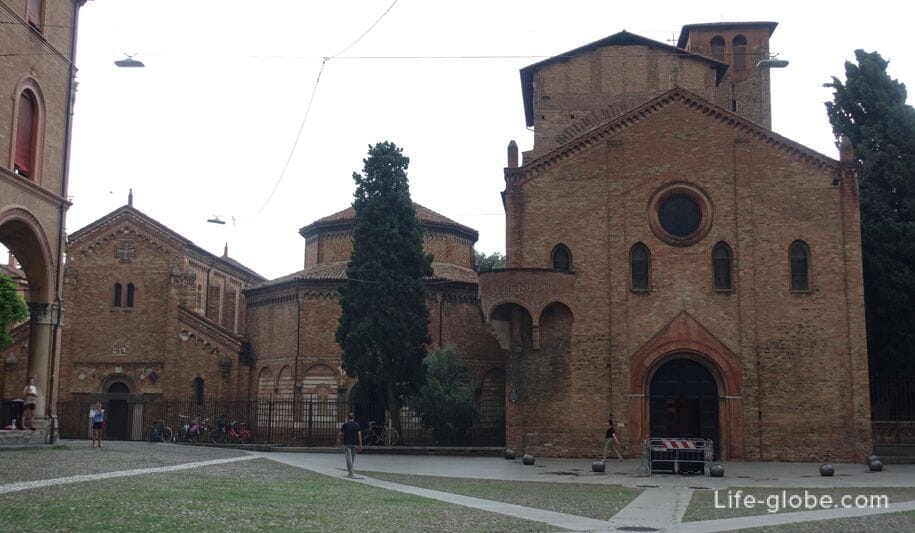
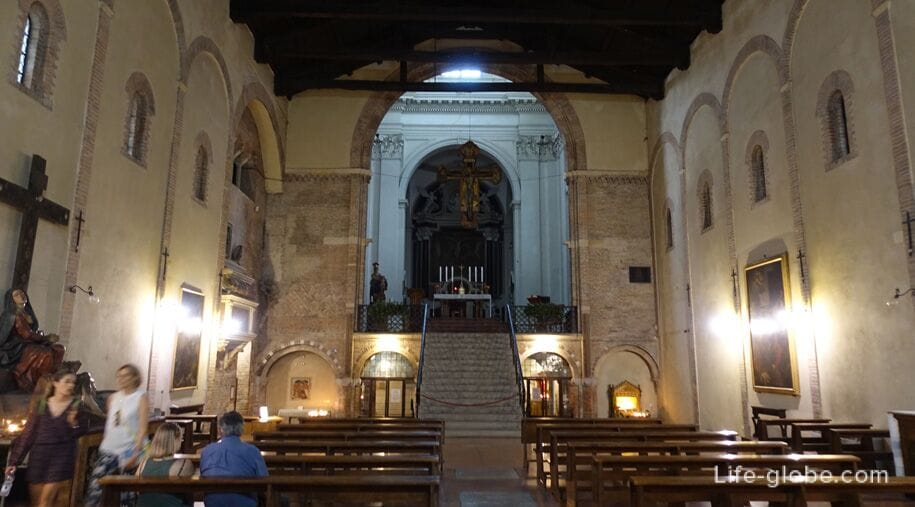
The Roman Catholic Basilica of Santa Maria dei Servi (Basilica di Santa Maria dei Servi), founded in 1346, as the Church of servitu - the order of the servants of the blessed virgin Mary. In the 20th century, Pope Pius XII assigned the Church the status of Basilica.
A distinctive feature of the Church is its courtyard or atrium. The Church also is a well-known authority, established in 1967, the company Tamburini of Crema, which can work mechanically.
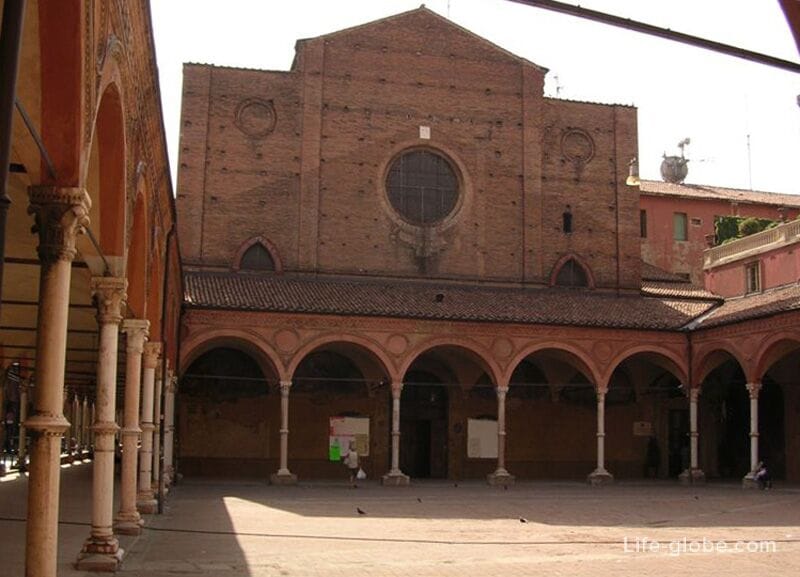
Basilica of San Giacomo Maggiore (Basilica of San Giacomo Maggiore) - a historic Roman Catholic Church built between 1267 and 1315 years by the monks of S. Agostino. Restored in the late 15th century.
The facade of the building is the oldest part of the Basilica, with its characteristic late-Romanesque features. Along the left wall of the Basilica is the portico of the Renaissance, which gives access to two cloisters, one 15th and the other 16th centuries. Property is restricted-preserved part of the walls of Bologna the 11th century.
The interior of the Church is designed in the style of the Renaissance and Baroque periods, with numerous chapels. In the vaults are frescoes executed in 1495 by the masters, including Lorenzo Costa.
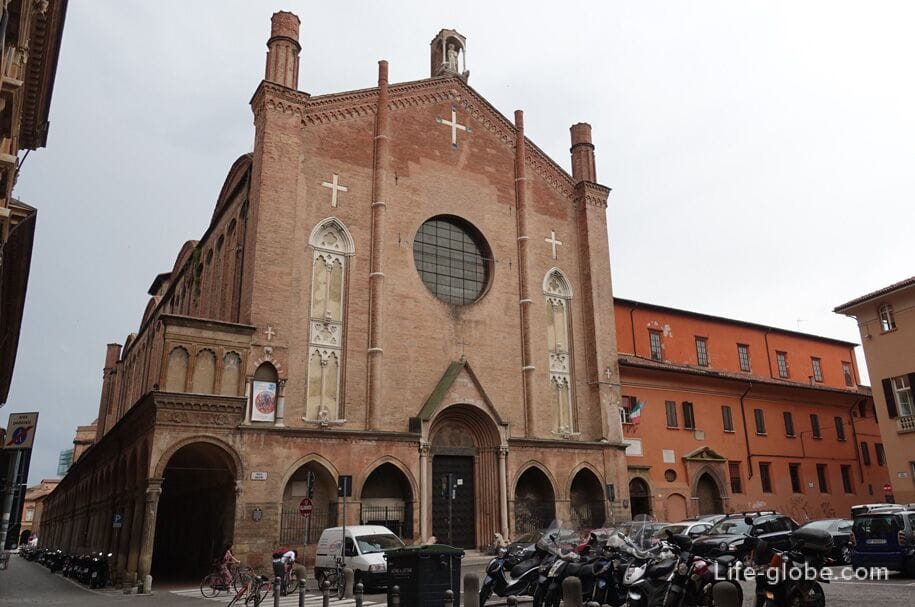
Basilica of San Domenico or of the Holy Domenica (Basilica di San Domenico) is one of the most important churches of Bologna. Dedicated to St. Dominic, the founder of the order of preachers.
The interior of the Church made in the Baroque style, there are three nave, several side chapels, transept, choir and apse.
Also in the Basilica has a small Museum which houses works of art and religious relics, and nearby is the monastery contains the cloisters 14th to 16th centuries, with tombstones and plaques on the walls.
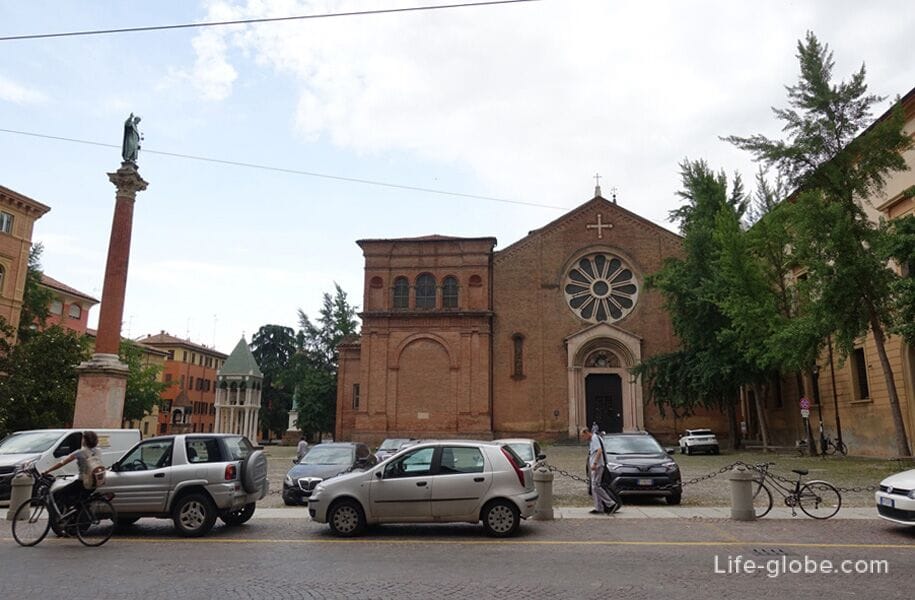
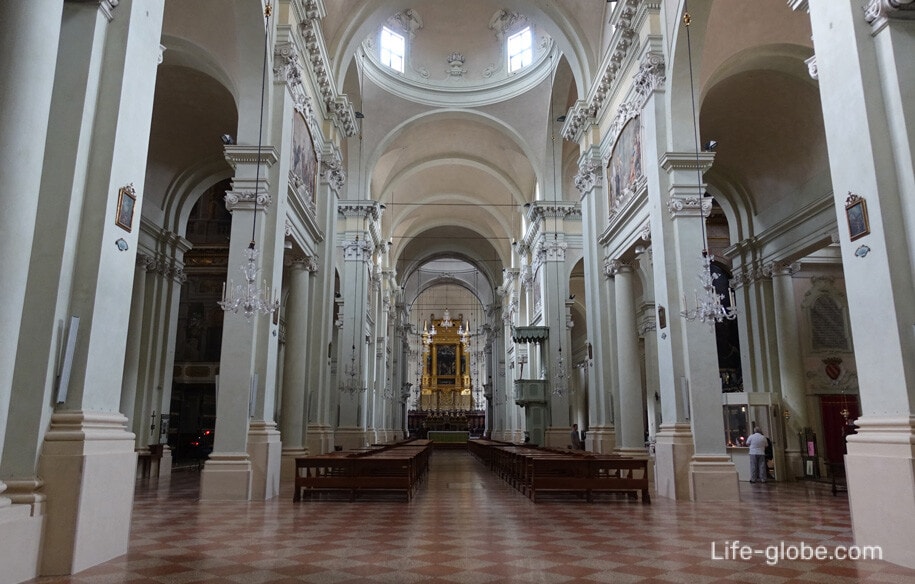
The Basilica of San Francesco or Saint Francis (Basilica di San Francesco) is a historic and one of the largest churches in Bologna, the facade overlooking the eponymous square.
Built by the Franciscan community between 1236 and 1254 years, the basic structure of the Basilica was finally completed in 1263, is the first Italian example of Gothic style of French origin.
Currently, the Church is a sort of mix of different styles including Romanesque, Gothic and early Renaissance.
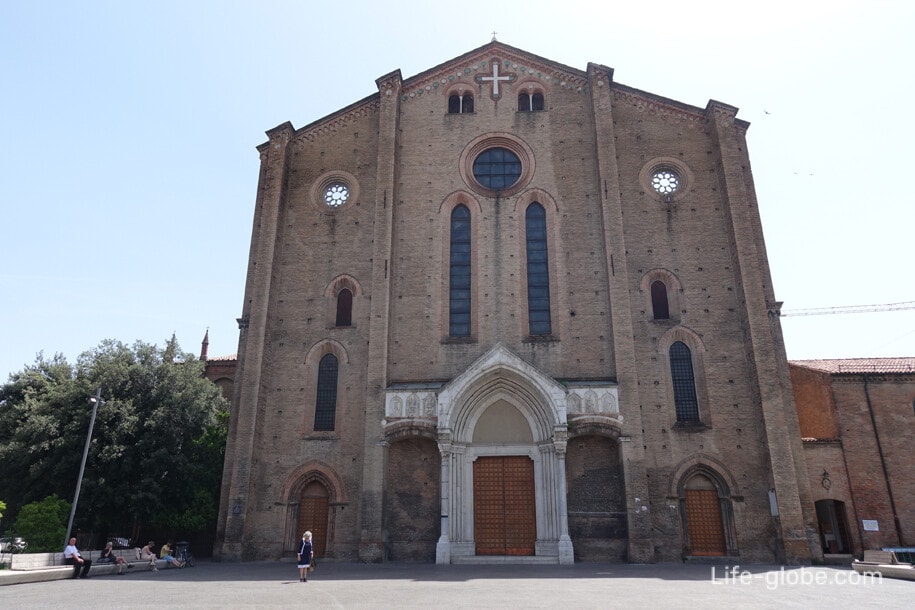
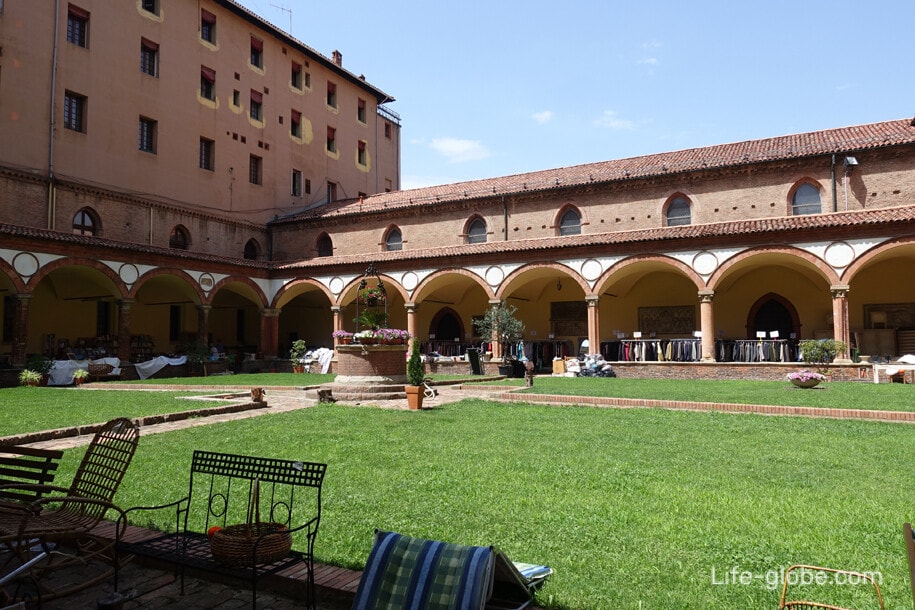
The main palaces of Bologna
Palazzo della Mercanzia or Trade Palace (Palazzo della Mercanzia), where the Trade-industrial, agricultural and craft chamber, with the end of the fourteenth century governing commercial and trading activities of Bologna.
The facade, built of brick and stone, has two large Gothic arches. Above the arches, between two arched Windows, stands a small marble balcony, from which the judge read out the sentences. Above the balcony is the elegant spire adorning the top of the building.
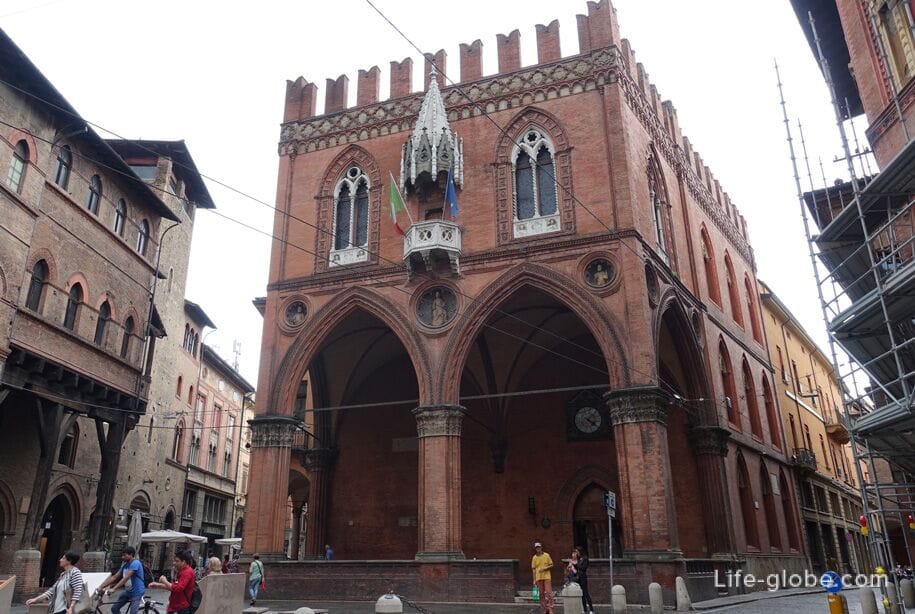
Palazzo Pepoli (Pepoli Palazzo Vecchio), a medieval Palace built in the Gothic style, the walls of which currently houses the Museum of history of Bologna.

Museum of Palazzo Pepoli Campogrande, also known as the Nuovo Palazzo Pepoli (Pepoli Palazzo Nuovo), a Baroque Palace that serves as a public art gallery art of the late Baroque, consisting of several rooms.
Palazzo Malvezzi Campeggi, which has the Renaissance style and at one time belonged to the family of Malvazia. The construction of the Palace began in the mid 1500 years over a more ancient construction. Currently, the walls of the Palazzo is the law faculty of the University of Bologna.
Palazzo Bevilacqua Ariosti (Palazzo Sanuti Bevilacqua Degli Ariosti) is a Palace built by count nicolò Canute, between 1477 and 1482 years. Externally, the building is characterized by the absence of the portico, is quite a recurring element in the Bologna palaces of the time.
Inside there is a beautiful courtyard, characterized by two floors of the porticoes (loggias), columns of which are the work of Filippo Tommaso da Varignano.
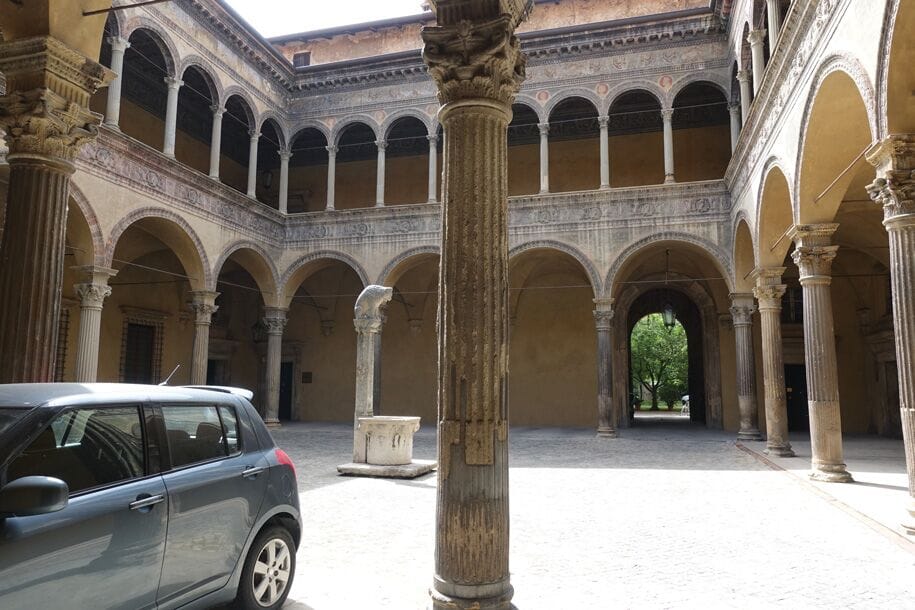
The main theatres of Bologna
Teatro Comunale di Bologna (Teatro Comunale di Bologna), the Opera theatre of Bologna, one of the most important Opera venues in Italy. As a rule, in the theatre present eight operas with six performances during the season from November to April.

The arena del sole theatre (Teatro Arena del Sole) is one of the most beautiful Italian theatres.
On the neoclassical facade of the building indicate the words "Seat reserved for the daily show."
The present theatre, outdoor 20 February 1995, has two halls: the "Sala Grande" on 888 seats and a smaller hall "Sala Interactive". Also, there is an open space called "Il Chiostro Dell'arena" - yard, received from a former monastery situated in this location before construction of the theater, which now hosts summer performances.
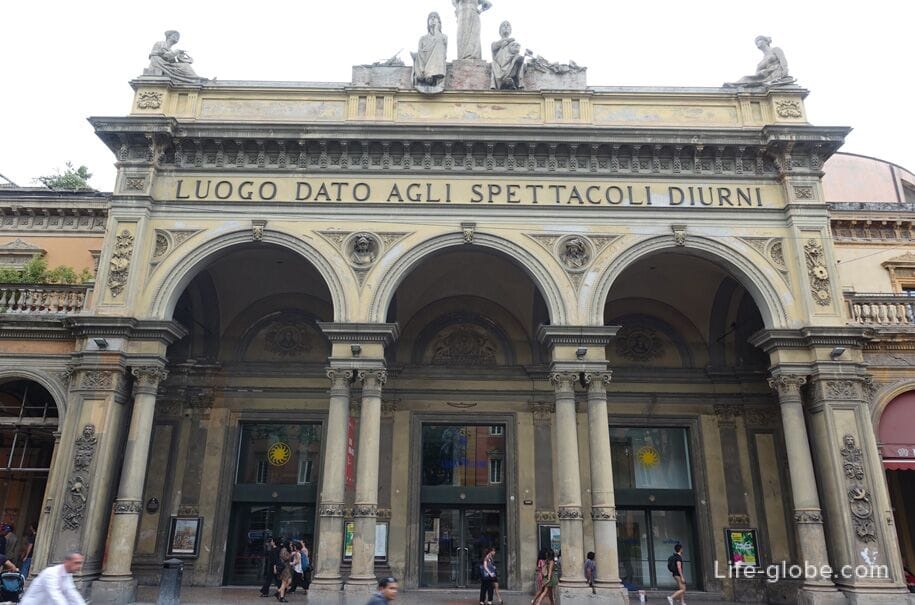
Learn more about the sights and the historical centre of Bologna...
The sights outside the centre of Bologna
Beyond the historic gates of Bologna, and also sights of interest, which include:
- the sanctuary of the Madonna di San Luca (Santuario Madonna di San Luca) is a monumental Church dedicated to the virgin Mary, is located on Guard hill.
To the Church leads to the Portico di San Luca, perhaps the longest in the world connecting Port Saragossa with the temple.
Currently, the Church of San Luca, is a revered Shrine, one of the symbols of Bologna which are among the main attractions of the city and the surrounding and a place of pilgrimage and the veneration of the icon of the Madonna of San Luca. Read more about the sanctuary of the Madonna di San Luca in Bologna...
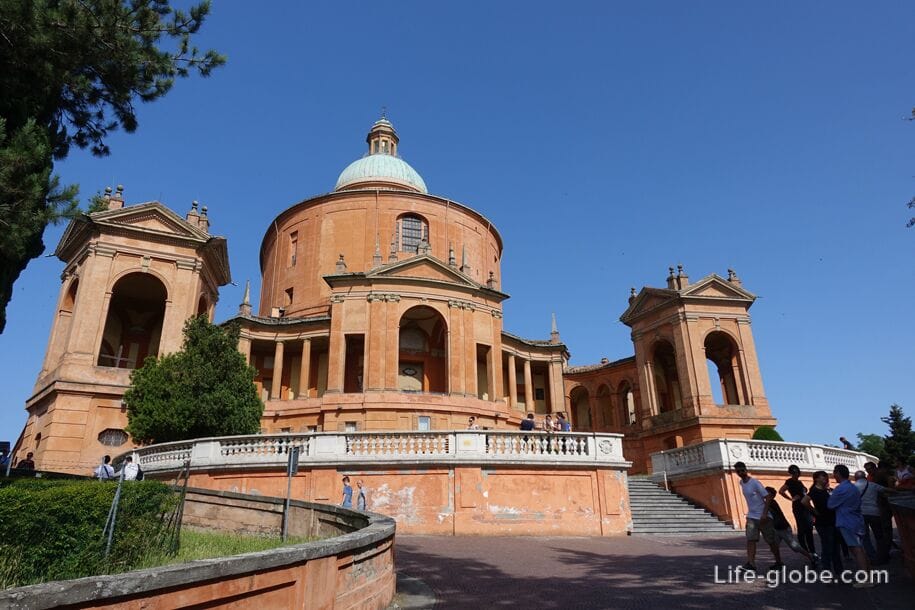

- cemetery of Milan (Cimitero monumentale della Certosa) is a monumental historic cemetery Certosa monastery, one of the oldest in Europe.
The necropolis was founded in 1801 by reusing pre-existing structures of the monastery, founded in the mid-fourteenth century, which preserved the Church of San Girolamo.
Passion of the nobility and the bourgeoisie of that time to build a family tomb turned Certosa in a real "open air Museum" is a unique place sculpture and architecture of the nineteenth and twentieth centuries;
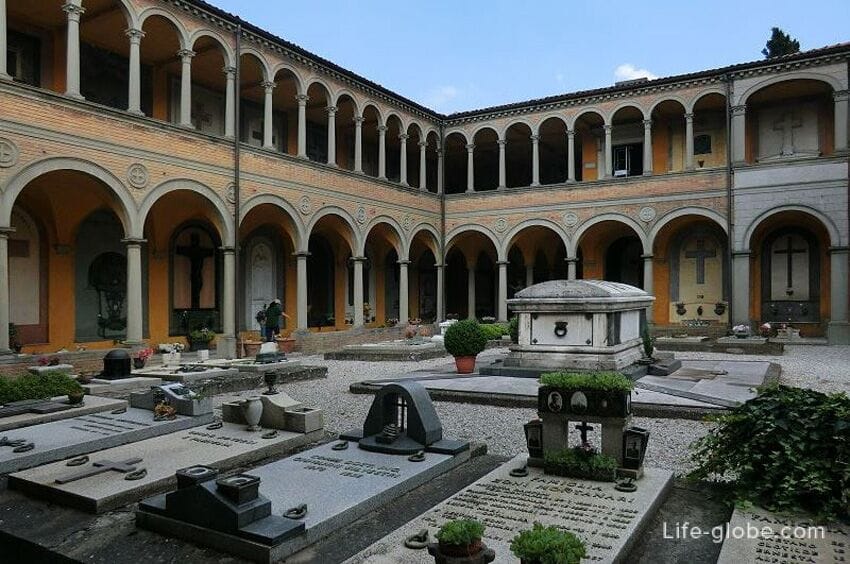
- Park the Giardini Margherita and the gardens of Marguerite (Al Parco Giardini Margherita) is the largest and most visited urban Park based on the example of parks in the major Italian and European cities.
The Park was opened in 1879 and named after the wife of Umberto I.
The gardens, covering an area of 26 acres, save a substantial part of the original plan, with lots of greenery, walkways, a pond and extensive lawns.
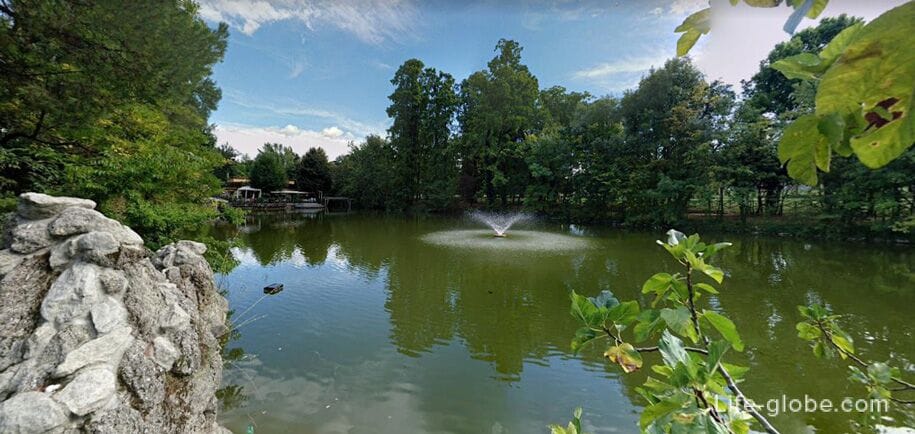
Tourist trains and buses in Bologna
At Bologna ply tourist buses and trains, where you can visit the main sights of the city accompanied by an audio guide.
Routes, timetables, prices and other necessary information can be found on the website.
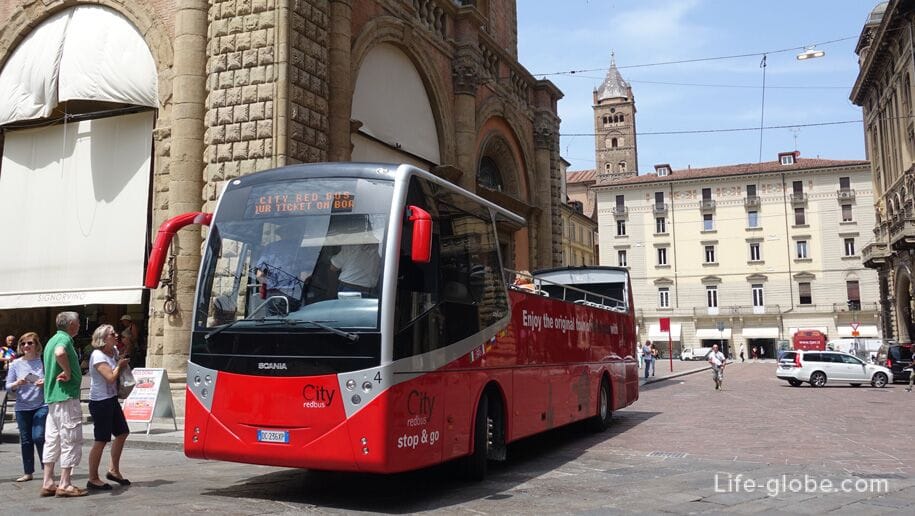
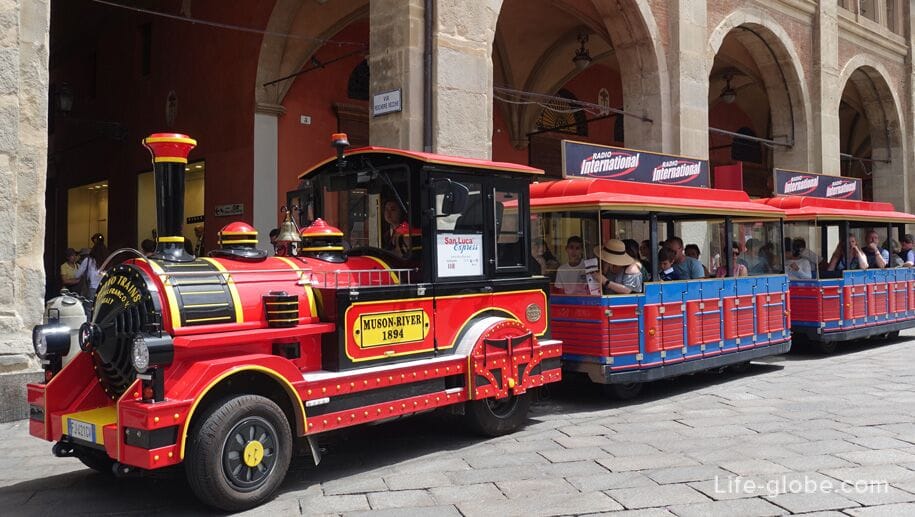
Unusual excursions in Bologna and outside the city
Tourist map of Bologna
For the convenience of visiting the museums of Bologna is to buy a tourist card (tourist pass), which gives the right to visit the many museums of Bologna. Tickets can be purchased in the tourist offices of the city or online. Details on the website.
The Cuisine Of Bologna
Bologna is famous for its culinary traditions, is home to the legendary and widely known meat sauce "Bolognese", which is used as a sauce for tagliatelle in Italy is called ragu.
The Emilia is the birthplace of tortellini (Tortellini) - Italian dumplings made of unleavened dough with meat, cheese or vegetables, can be served in broth.
As in all of Emilia-Romagna, the production of sausages, such as prosciutto, mortadella and salami is an important part of the local food industry.
Well-known nearby vineyards Pignoletto dei Colli Bolognesi, Lambrusco di Modena and Sangiovese di Romagna, from the harvest which produces the famous wine.
Traditional Bolognese desserts are often linked to the holidays:
- fave dei morti ("dead cookies") - multi-colored macaroons, prepared for all saints ' Day;
- jam, which is served on Saint Joseph's day;
- carnival sweets known as sfrappole - light and delicate fried dough with powdered sugar;
- torta di riso - a pie made with almond, Fig and Amaretti - prepare year-round.
Where to go from Bologna
Many tourists use Bologna as a starting point to visit nearby towns and resorts, having stayed in town for a few days.
The city has a major railway station (Bologna Centrale), providing excellent connections to Bolney with many Italian cities and suburbs.
From Bologna you can visit such famous cities as Venice, Florence, Parma, Milan, Verona, Rome, Bari, etc.
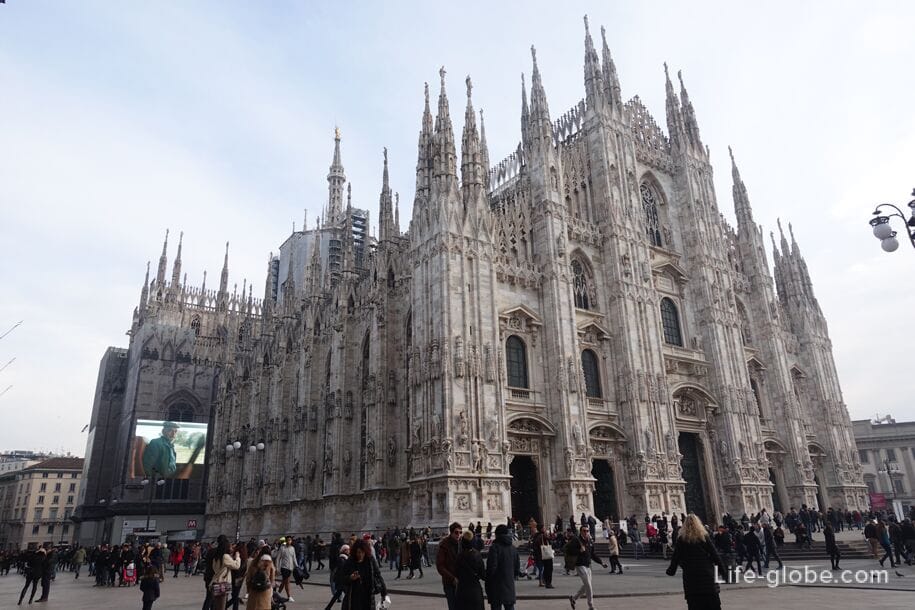

Relax on the Adriatic coast in such cities as nice, Rimini or Riccione.
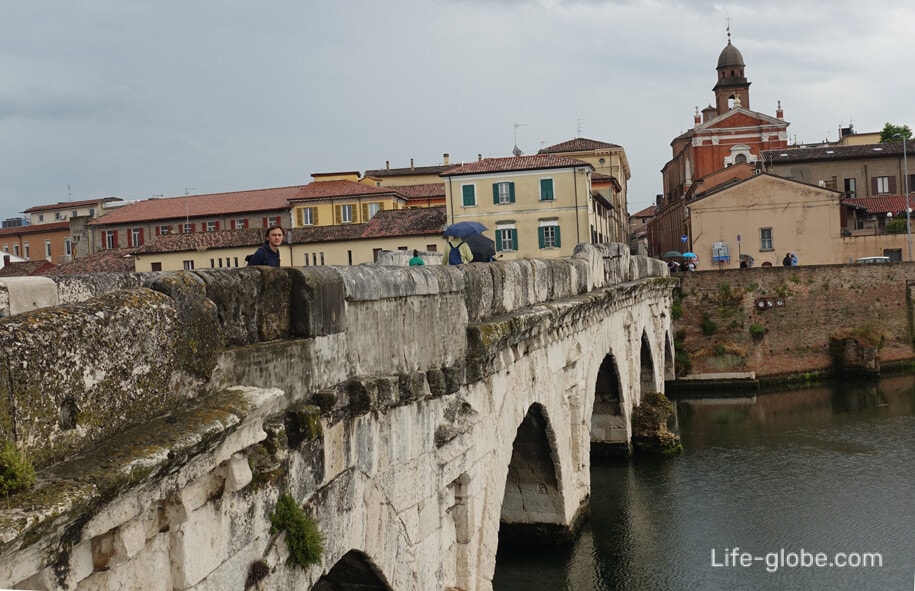
Walk in the streets of small towns: Ferrara, Ravena, Modena, Padua, Urbino.
Or visit one of the most interesting of microstates on the planet - San-Marino and enjoy its historical center, located on the mountain massif.
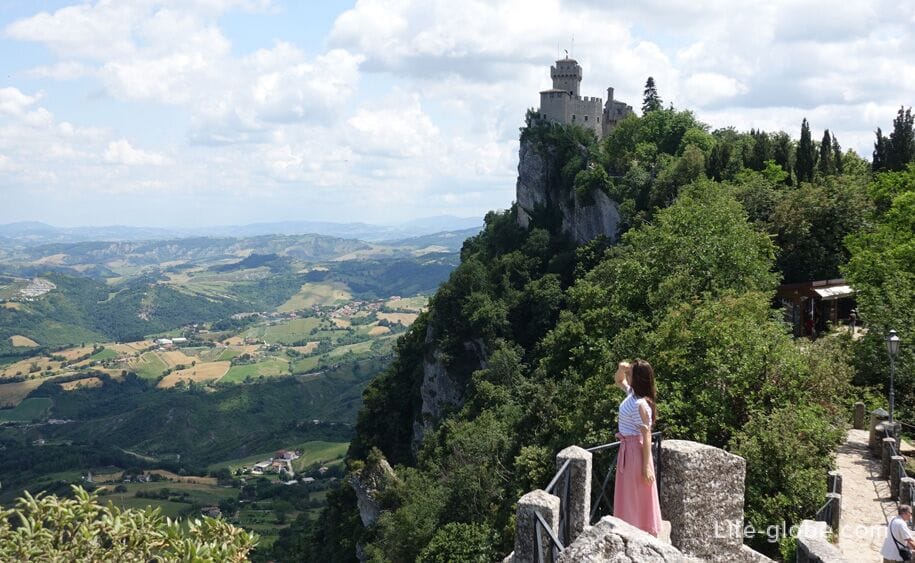
To travel by trains, buses, taxis or rented cars, which are easier and more mobile.
Opposite the Central railway station Bologna are of 4-star hotel Mercure Bologna Centro, the 4-star Starhotels Excelsior with Breakfast included in the room rate and is a 4-star UNAHOTELS Bologna Centro with Breakfast and rooms with author's design interior.

Where to stay in Bologna (Bologna hotels)
The choice of housing in Bologna is very large and diverse, here you can find accommodation for every taste and budget, from cheap hostels to pricey hotels, country houses, apartments and guest houses located in the historical centre of the city, or more distant from such.
There is a 5-star Grand Hotel Majestic gia' Baglioni, located in the heart of Gordes, in the 18th-century Palace with period furniture. Room rates include Breakfast.
All accommodation facilities in Bologna, from budget to luxury, you can view and book here
How to get from Bologna airport to the city center
Taxi/Shuttle Service
To get from the airport Bologna to Bologna city center and other cities and resorts in Italy, more convenient and faster than a taxi. Book a taxi/Shuttle service is possible in advance, even from home. At any time of the day, at the airport, you will meet your driver with a sign, which will be written your name and surname. For taxi is enough to tell us your flight details! To know the cost of taxi ride here...
Car rental
If you are planning to travel to Italy, then the ideal option would be to rent a car. To choose and order a car in advance, at the appointed time, your car will be waiting for you outside the airport. To see and pick up the car here...
Public transport
From public transport:
- monorail train Express Marconi ("Marconi Express"), which connects the airport to Bologna train station Bologna Centrale;
- Shuttle buses connecting the airport of Bologna to the train station;
- public buses will have to go with change.
Read more about how to get from Bologna airport to centre and from centre to Bologna airport it is possible to learn here.
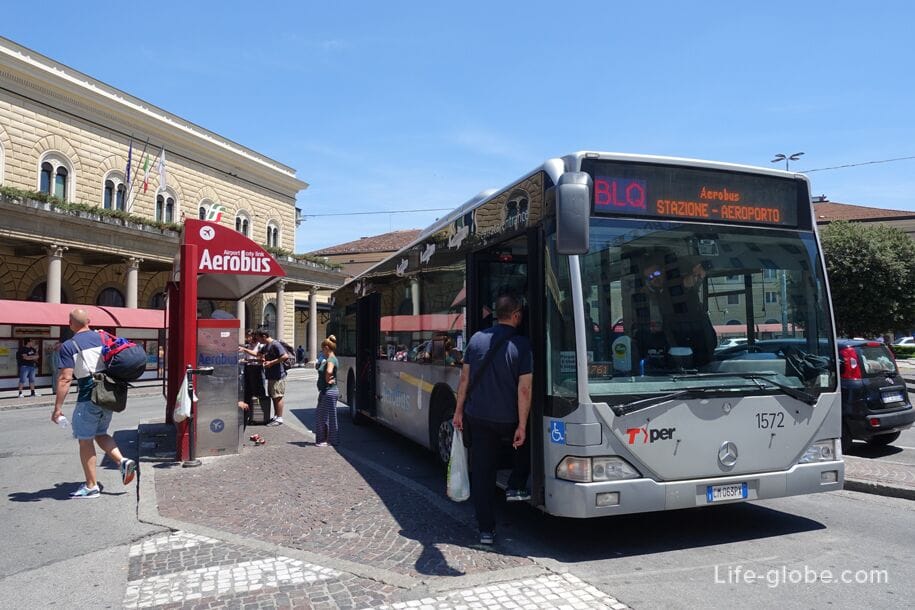
Currency
Italy belongs to the Euro zone - the country's currency the Euro (€). Payment is accepted in cash and Bank cards in many shops, cafes and restaurants.








